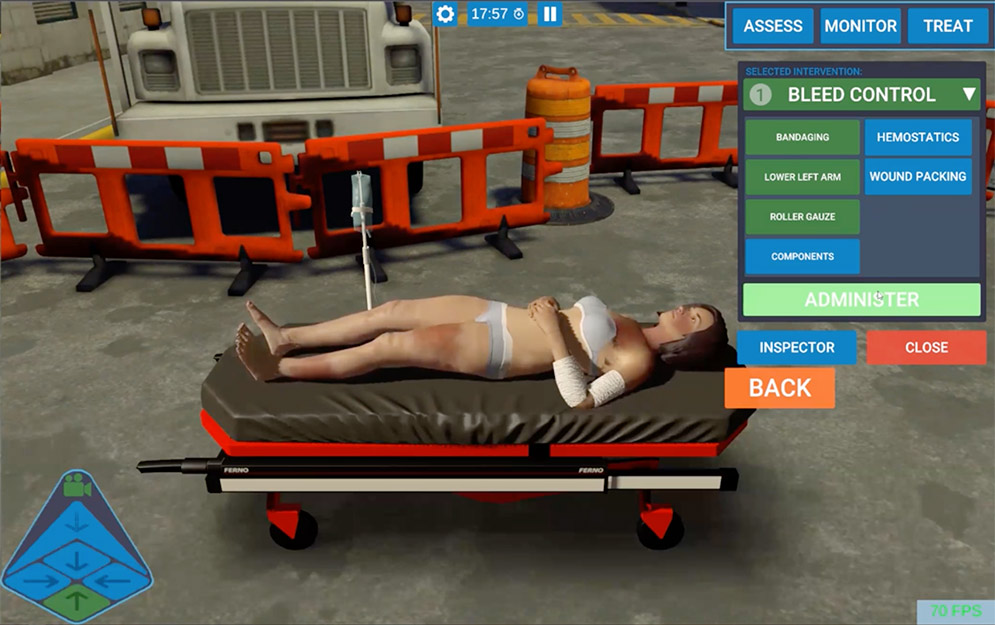
It’s been more than a year in the making, but a major update to VRpatients’ training application is here, and is stocked full with upgrades and enhancement customers requested. It’s all with the goal of training a better first responder.
“I just saw on the news last night where seasoned health care workers are leaving their chosen field, so consequently there are now people working with less and less experience. We want to give the people that are training for these positions the most real life experience that they can get,” explains Duane Ginder, an experienced EMS worker, educator, and manager who serves as an EMS subject matter expert for VRpatients, and does much of the onboarding and training for customers.
A main component of the update is a grading timeline where trainers can see a user’s interactions to see what actions the trainee did and in which order.
“Critical thinking is the most important thing. Being able to know when to do something is just as important as how to do something,” Ginder says.
Instructors can also see how quickly a trainee made their decisions to do what they did.
“The user can be put into situations that they won’t be able to experience in any other kind of training. If a student does a procedure at an inappropriate time, an instructor will be able to see that and can talk to them about it. Then the student can go back in and do the same scenario again to see the results of a more appropriately timed intervention,” he says.
The new update also allows instructors to adjust the length of cases to better reflect what actually happens in real life.
“Currently, all of our cases end in 15 minutes and that’s just not really lifelike because many times we’re with the patients for 25 minutes or longer. Depending on the location, [medics] may have a 45 minute transport or longer,” Ginder explains. “So instructors can build changes into the patient that can happen along the way in a more realistic timeline and put a student into the situations that they’re going to be put into in the field.”
Since VRpatients provides real life training without real life consequences, the addition of more realism in the software makes for a better training experience.
This update is the result of a long and customer-driven process.
Taking suggestions and feedback from customers about what they would like to see, the team at VRpatients then prioritizes the possible new features.
“We would get input from our graphic design and our web team, the people that actually do the design work to bring these things to fruition,” says Tom Cox, a former paramedic and training director who is now the Director of EMS sales for VRpatients. “The team would tell us how much development time the enhancement would take, then we would look at what the benefit of that feature would be and so on. We ended up with a roadmap of things to be introduced and we try to rank them according to what our customers asked for.”
The fact the program is online makes periodic revisions and updates possible.
“We have the flexibility to move things around on that timeline so when we discover something that’s universally being asked for more and more by our customers, we can move it to the front of the line,” he explains. “It’s all about what needs to be done first, second, and third, and we’re flexible enough to kind of adjust that as we go.”
Cox says COVID is a perfect example of the flexibility of VRpatients. When the pandemic began, VRpatients quickly added a COVID case and appropriate precautions to the software.
“We’re always listening and we’re always anxious to hear what the customers have to say and then we take that information and we rank it according to what’s possible, given time and resources.”
If you’re ready to check out the VRpatients software, schedule a demo today to see what everyone in EMS training is talking about.
